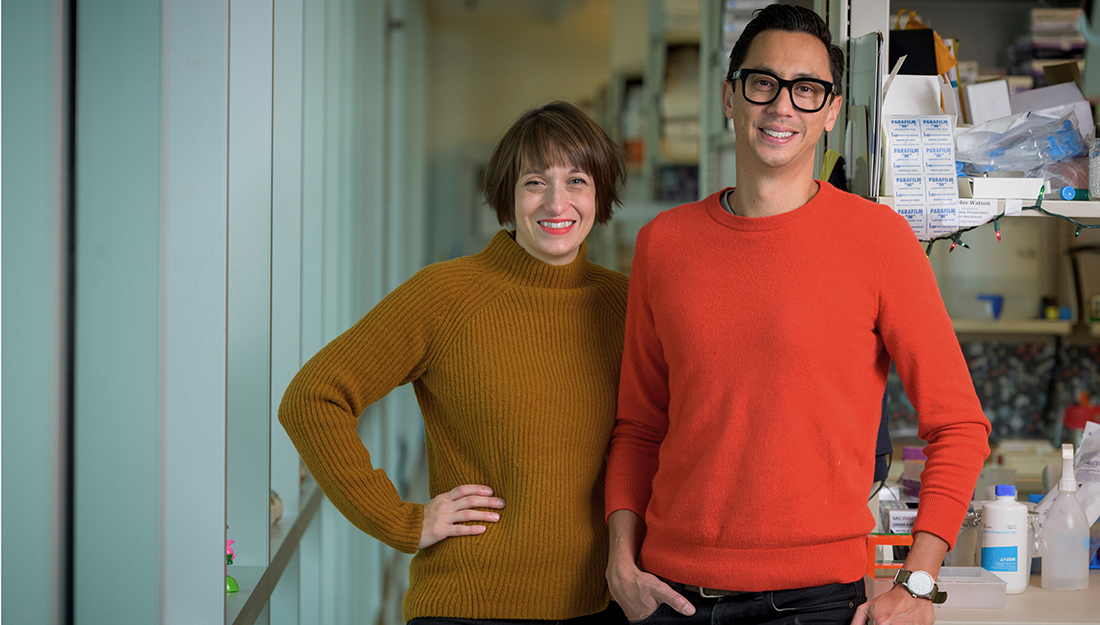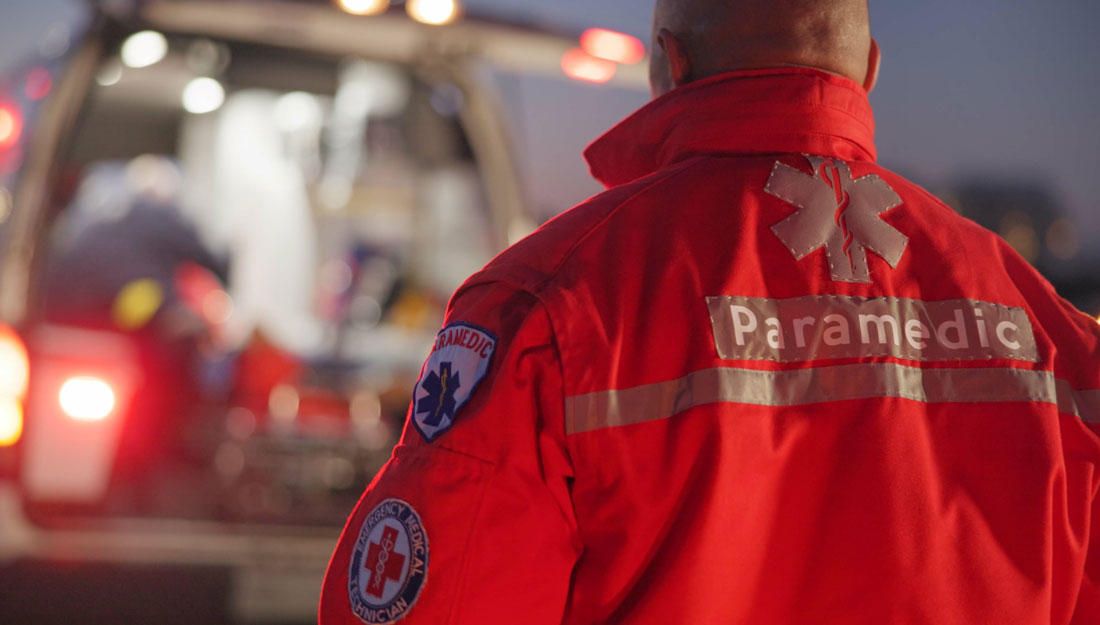- Christina Sumners
- Medicine, Research, Show on VR homepage
Partners in—and out of—the lab
How two researchers’ partnership and expertise unlock doors to studying deadly disease

Robert O. Watson, PhD, MPH, an assistant professor, and Kristin L. Patrick, PhD, a research assistant professor who will begin a tenure-track appointment June 1, both in the Department of Microbial Pathogenesis and Immunology at Texas A&M College of Medicine are married. They’ve also married their research interests and, together, they run a lab that studies how bacteria infect hosts.
“We both think about our research both in terms of how bacteria behave and how the host reacts to those bacteria,” Patrick said. “It’s about understanding both how pathogens are able to modulate the host’s immune response to establish an infection and how the host detects and responds to the bacteria.”
Patrick and Watson met in graduate school at Yale University School of Medicine studying microbiology and began dating in 2004. She was studying RNA biology, while he focused on two food-borne bacteria: salmonella and campylobacter. When they graduated, they each found postdoctoral fellowships, in separate labs, at the University of California San Francisco School of Medicine. So they headed to the west coast. “We had an amazing opportunity to live in our favorite city,” Watson said. They married there in 2011. Patrick continued her study of RNA and gene expression. Watson joined a lab that studied tuberculosis (TB), which was a slight shift in his focus, but still within his field of host-pathogen interactions.
“Mycobacterium tuberculosis, the bacteria that causes TB infection, is a global pathogen, but one that we don’t see that often in this country,” Watson said. In 2016, 1.7 million people died of TB around the world, but that same year, there were only 9,272 cases in the United States, where 470 people died.
Moving from food-borne bacteria to one spread through the air required Watson to shift his thinking a bit. “Something like salmonella or campylobacter is very different from TB,” he said. “TB has evolved a very different lifestyle, with a very different course of the disease.”
Although salmonellosis can make someone pretty miserable, it tends to be self-limiting; a healthy person will recover completely in a few days. TB, on the other hand, if left untreated, is a chronic condition.
“M. tuberculosis doesn’t want to kill your cells, it wants to live in your cells for a really long time,” Patrick said. “If it kills the host, then where does it go? If you think of it from the pathogen side, it wants its host to live so it can spread itself to other hosts. TB is really good at that.”
So good, in fact, that tuberculosis infects one quarter of the world’s population. To do this, the TB bacteria had to evolve a variety of adaptations to not only survive but also replicate within the host’s body.
As their postdoctoral fellowships came to an end, they began looking for faculty positions. “We work with the wild-type, real deal TB bacteria,” Watson said. That meant they had to limit their search to institutions with biosafety level (BSL) 3 facilities.
“To get an academic job with a BSL 3 availability is difficult. So, we thought, ‘Why don’t we work together?’” Patrick said. “We decided that he would find a faculty spot, and I would blend my research interests in regulation of gene expression into his research plan.” That way, they would be more competitive as a team.
“The stars aligned at Texas A&M for us with a great team of other researchers,” Patrick said. “That’s how east- and west-coasters ended up in Texas.”
Now, together, their lab studies what happens in the first four to 48 hours after the TB bacteria enters a hosts’ cell, specifically the macrophage, which is part of the host’s immune system. “It actually lives in the cell that is supposed to kill it, which is a pretty neat survival mechanism,” Patrick said. “It’s an arms race between the bacteria and the macrophage in those early hours after infection.”
In the controlled environment of the lab, Patrick and Watson can see what genetic and environmental factors affect whether the bacteria becomes an established infection within the host. They think there are two pathways that might be important, with one controlling the infection and the other actually working in favor of the bacteria and making pathogenesis and inflammation more likely.
“We think the events of those first few hours after infection have numerous consequences,” Watson added. That’s why both of their expertise is important. By combining their skill sets the two can interrogate all sorts of biology occurring at the host-pathogen interface, including secretion of bacterial proteins, activation of bacterial killing inside the cell, and changes to host gene expression. “Our work together is totally integrated, two people running one lab,” Patrick said. “We each bring important skills to understanding what’s happening between the host and the bacteria.”
At home, they both have important roles to play as well as the parents of two young children.
“Ultimately, by identifying the players involved in each of these pathways, we hope to one day develop therapeutics that shift these outcomes in favor of the host, boosting the beneficial pathway and suppressing the pro-bacteria one,” Watson added. “That could prevent TB from ever getting the chance to start the cascade of infection.”
Media contact: media@tamu.edu


